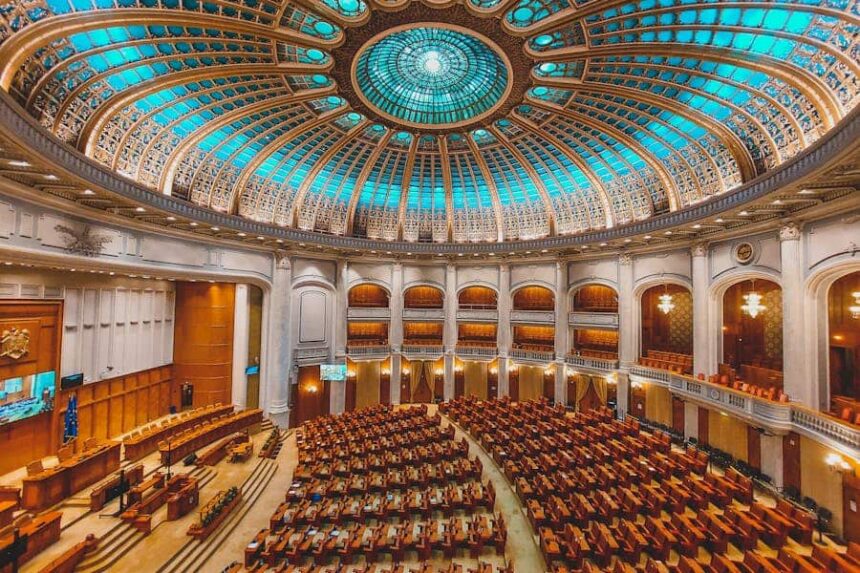This common form of government divides power between an elected president and a separate legislative body. In presidential democracies, the president is both the head of state and the government, holding significant influence over the executive branch while remaining independent from the legislative branch. Unlike parliamentary systems, where the executive and legislative powers are interconnected, presidential democracies separate these powers, creating checks and balances.
This article dives into what defines a presidential democracy, examining its core features, advantages, and challenges. By understanding what presidential democracy is, readers can gain insights into how this system functions globally and its impact on governance and citizen engagement. Whether you’re exploring presidential democracies for academic purposes or personal interest, this guide will clarify its structure, key elements, and real-world examples.
What Is Presidential Democracy?
A presidential democracy is a type of government where an elected president serves as both the head of state and head of government. In this system, the executive branch operates independently of the legislative branch, creating checks and balances. The president is elected by the people, often for a fixed term, and does not rely on legislative support for their position. Countries like the United States and Brazil are examples of nations that operate under presidential democracies.
Defining What Is Presidential Democracy
To understand what presidential democracy is, it’s essential to define its core elements. A presidential democracy is a system in which the president is elected directly by the people and serves as the head of the executive branch. Unlike parliamentary systems, where the head of government is selected by the legislature, presidential democracies separate the executive and legislative branches, maintaining a balance of power.
Core Characteristics of Presidential Democracy
In a presidential democracy, power is divided between different branches, with a strong emphasis on checks and balances. The executive, legislative, and judicial branches function independently, each playing a distinct role in governance.
The Role of the President
The president serves as both the chief executive and the head of state. This role includes setting policies, enforcing laws, and representing the country in foreign affairs. The president’s powers are defined by a constitution, with limits to prevent overreach.
Distinction from Parliamentary Democracy
A key distinction in understanding what presidential democracy is is that it differs from parliamentary democracies. In a parliamentary system, the executive is part of the legislature, often leading to a close relationship between the two. Presidential democracies maintain strict separation to prevent any branch from becoming too powerful.
Importance of Fixed Terms
In a presidential democracy, presidents usually serve for fixed terms, adding stability and predictability to the government’s structure. This feature contrasts with parliamentary democracies, where leaders can be removed through votes of no confidence.
Global Examples of Presidential Democracies
Countries like the United States, Mexico, and Indonesia follow a presidential system. Each nation has adapted presidential democracy to suit its unique cultural and political landscape, showcasing the flexibility of this system.
How Does Presidential Democracy Work?
Election of the President
In presidential democracies, the president is directly elected by the people, giving citizens a direct voice in choosing their leader. This process reinforces democratic values and allows for the leader’s accountability to the electorate.
Separation of Powers
A hallmark of presidential democracy is the separation of powers. The executive, legislative, and judicial branches operate independently to provide checks and balances. This separation ensures that no branch has excessive control over the others.
Fixed Terms and Succession
Presidential democracies have fixed terms for the president, which provides stability and prevents abrupt leadership changes. Succession plans are also established, ensuring continuity of governance in the event of a president’s incapacity.
Legislative Functioning
The legislative body, often a congress or parliament, is elected separately and works independently from the executive. While the president can influence legislation, they do not directly control the legislative process.
Judiciary’s Role in Balancing Power
The judiciary plays a crucial role in maintaining the balance of power in a presidential democracy by interpreting laws and ensuring they align with the Constitution.
Advantages of Presidential Democracy
Understanding the benefits of what is presidential democracy helps highlight why this system is popular globally.
- Clear Separation of Powers: Ensures that executive and legislative branches operate independently, preventing excessive control by any one branch.
- Fixed Terms Promote Stability: Presidents serve for set terms, reducing the potential for sudden leadership changes.
- Direct Accountability to Voters: Presidents are elected by the people, making them directly accountable to the public rather than a legislative body.
- Checks and Balances Prevent Abuse of Power: Each branch’s independence encourages oversight, minimizing the risk of authoritarianism.
- Flexible in Diverse Political Environments: Presidential democracies have successfully adapted to various cultural and political contexts around the world.
Disadvantages and Challenges of Presidential Democracy
While presidential democracy has strengths, it also faces challenges.
Risk of Deadlock Between Branches
The separation of powers can lead to legislative and executive deadlock, especially if different parties control each branch. This conflict can slow down decision-making.
Possibility of an Overly Powerful President
Although checks and balances exist, some argue that presidential democracies can concentrate too much power in the executive branch, especially if there are weak legislative bodies.
Potential for Political Polarization
The nature of presidential democracy may encourage political polarization. Direct elections often lead to divisive campaigns, which can result in gridlock and limited collaboration between parties.
Impeachment and Removal Challenges
Removing a sitting president in a presidential democracy is typically more challenging than in a parliamentary system, as it usually requires a lengthy legal or legislative process.
Dependence on Voter Engagement
Since presidents are directly elected, the system relies on active voter participation. Low voter turnout can reduce accountability and may not fully reflect the will of the people.
Presidential Democracy vs. Parliamentary Democracy
Differences in Executive and Legislative Roles
In presidential democracies, the executive and legislative branches are separate, while in parliamentary democracies, the executive (often a prime minister) is part of the legislature.
Leadership Stability and Flexibility
Presidential democracies offer stability through fixed terms, while parliamentary systems can be more flexible, allowing leaders to be removed through votes of no confidence.
Voter Representation in Leadership Selection
Presidential democracies offer direct election of leaders, while parliamentary systems typically have the leader elected by the legislative body, which may not provide the same direct representation.
Checks and Balances
While both systems aim to prevent the concentration of power, presidential democracies emphasize the separation of branches, while parliamentary systems focus on collaborative governance.
Global Examples of Each System
Countries like the U.S. and Brazil exemplify presidential democracies, whereas the United Kingdom and Canada follow parliamentary systems, each reflecting unique governance approaches.
Wrapping Up
Exploring what presidential democracy is reveals a system designed to balance power, ensure stability, and uphold democratic principles through direct elections. By separating the executive and legislative branches, presidential democracies create checks and balances, though they may face challenges like political gridlock or polarization. Understanding the nuances of presidential democracy allows us to appreciate its role in modern governance, particularly in countries that value clear, structured leadership.
FAQ’s
Q. What is presidential democracy?
A. Presidential democracy is a system in which an elected president serves as both the head of state and government, with power separated across the executive, legislative, and judicial branches.
Q. What are the main features of presidential democracy?
A. Key features include a directly elected president, separation of powers, checks and balances, and fixed presidential terms.
Q. What is the difference between presidential and parliamentary democracy?
A. In presidential democracies, the executive and legislative branches are separate, while in parliamentary systems, they are interconnected, with the executive dependent on legislative support.
Q. What are the pros of presidential democracy?
A. Advantages include stability through fixed terms, clear separation of powers, direct accountability to voters, and robust checks and balances.
Q. What challenges does presidential democracy face?
A. Common challenges include the potential for political deadlock, power concentration in the executive, and political polarization, particularly during elections.




